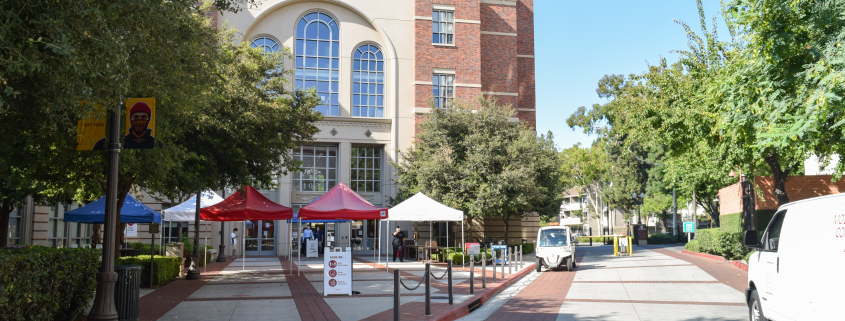Stigma around STI testing persists as cases increase

With the inaugural Sex Week at USC now kicked into gear, events are bringing issues regarding sexual and reproductive health to light. In a briefing Tuesday with the Daily Trojan, Chief Student Health Officer Dr. Sarah Van Orman discussed the prominence of sexually transmitted diseases on campus.
“We are seeing a small but steady increase in syphilis cases,” Van Orman said. “That’s consistent with what is being seen nationally and locally. Syphilis, 10 years ago, was exceedingly rare among students; and now we see much higher numbers. We’re also seeing slight increases in the rates of gonorrhea as well.”
In the 2021-2022 fiscal year, Student Health reported 485 diagnoses among 4669 total visits for sexually-transmitted infection screening. Of these, 20 were syphilis and 115 were gonorrhea. For the 2018-2019 fiscal year, these numbers were 16 and 77, respectively. This is consistent with national trends: the CDC reported a steady increase in syphilis cases in the United States since 2001, with a notable increase of 6.8% between 2019 and 2020. Gonorrhea diagnoses also increased 111% from 2009 to 2020.
Van Orman said that syphilis is of greatest concern at Student Health.
“It has significant community and public health consequences,” Van Orman said. “It’s not always straightforward to diagnose and treat. So we are very concerned about that and are really trying to increase screening for syphilis.”
Despite considerable progress in the United States, stigma around getting screened for sexually transmitted infections and diseases persists on many levels — especially for marginalized communities, against whom STIs have often been weaponized. The devastating effects of the HIV/AIDS epidemic on the LGBTQIA community and of the rise of herpes on women — all amid racial disparities in healthcare — continue to reverberate to this day. Van Orman listed several factors that contribute to stigma.
“One is the sense for people that they are not at risk,” Van Orman said. “We tend to perceive risk [with] people that are strange to us, or people we don’t know. So for many people, especially if they’re partners, or students, or people they know, there’s a sense that there’s no risk associated with that.”
Another factor is a general fear when accessing American healthcare, of having their sexual history and, potentially, their sexuality, judged by practitioners or exposed by insurance providers. Van Orman noted that self-screening is available at Student Health for those who do not wish to speak with a practitioner.
“We want to talk to you if you have questions, but we also want people to recognize that we know, for many people, that removes a barrier,” Van Orman said.
Personal and family values, as well as polarized political attitudes surrounding reproductive healthcare, also contribute to stigma around STI screening. Abortion rights have been in the national spotlight ever since the Supreme Court overturned Roe v. Wade Jun. 24, and several states enacted, or are pushing for, restrictions on abortion services.
“We have many political leaders in our country weaponizing the receipt of healthcare around reproductive health,” Van Orman said. “It’s very chilling right now for people trying to access needed healthcare services.”
Van Orman also spoke to the success of the ongoing Vaxchella event and said Student Health so far administered 1,500 flu shots and bivalent coronavirus boosters.
“We actually saw more people than we anticipated,” Van Orman said. “Even on Monday and Tuesday, we had to close a little bit early because we had more people arriving than we actually had vaccines available … People seem to have been happy to have a chance to get both at once. So we’re very pleased with the turnout.”
Van Orman said a report with exact data on the number of vaccines administered will be released after Vaxchella concludes on Oct. 21. Student Health will resume weekly pop-up vaccinations at USC Village and the Trojan Farmers Market next week.
Coronavirus and influenza cases remain low, with the former at 18 cases reported on the week beginning Oct. 9 — a skewed statistic due to decreased campus activity over Fall Recess — and the latter continuing to be “sporadic,” Van Orman said.
At the national level, the CDC reported Friday that respiratory illness comprised 2.6% of total outpatient visits in the last week, which is above the national baseline of 2.5%. The greatest concentrations of influenza-like illness were highest in Georgia, Texas, Tennessee, South Carolina, New York City and the District of Columbia; activity remains low in California.

